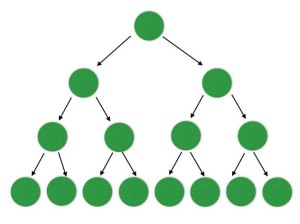A few years ago, I realized that in order to teach narrative choice design I needed a classification of types of choices. Creating games in the style of choose-your-own adventure, in the style of Choice of Games, Inkle Studios, Failbetter Games, the sadly defunct Telltale Games, or for interactive film, requires having a vocabulary that refers to the different ways in which choices can be expressive.
I came up with my own taxonomy, which I have been teaching in different iterations over the years. Inspired by works like Understanding Comics by Scott McCloud, I finally realized it’d be best to illustrate the taxonomy interactively, on top of discussing examples in the class. You can read/play the taxonomy on my itch.io page. (Update 16-Oct-19: Spanish version of the interactive taxonomy.)
This taxonomy is part of a larger lecture, which is the introduction to narrative choice design in my classes. While games may be a series of interesting choices, they also become much more complicated when we make those decisions be part of a longer narrative. One of the reasons why making choices can be compelling is that players can see the consequences of their decisions—that is the foundation of agency, one of the pleasures of digital media as defined by Janet Murray. We like feeling that the game is listening to us, that we are in control of our actions in the game, that our choices matter.
Challenging agency, however, also has a lot of expressive possibilities. First of all, players can have the illusion of agency without having to change the content of the game. If you’ve played any of the choice-based Telltale games, you have probably seen the caption “So-and-so will remember that” after making a decision. Most of the time, it turns out they won’t—but the player can believe that their action had an effect on someone. It is a way to use the player’s perception and imagination in order to fill the gaps and not having to expand on the content.
Frustrating the player, taking away agency, can also be expressive. Games have the annoying tendency to become “entitlement simulators” ; game designers should challenge players to make difficult, painful decisions, have them realize that the world may not revolve around them, and that there may be problems that are beyond their control. Untethered agency can be problematic in dating sims, for example—boiling down intimate relationships to choosing the right things to say oversimplifies how humans connect with each other. Representing love as having agency over a person, or being able to “win” them by achieving a score, can reinforce certain unhealthy ideas about relationships, and push players down the brink of toxicity
The taxonomy I propose is therefore a breakdown of the different ways in which undermining agency can be expressive, and can help players think about what they do. (Maybe.)

Using different types of choices is also a healthy way to keep projects under scope. As the image shows, if for every decision the player makes the story bifurcates, the content multiplies very fast. In order to write a choose-your-own-adventure story where each version is only four pages long, and only gives two choices to the player on each page, we would have to write fifteen (15) pages. It is not very efficient and the combinatorial explosion goes out of control very fast. There are also models of different structures that both provide players with interesting choices without having to generate inordinate amounts of content—Sam Kabo Ashwell provides one of my favourite classifications on his blog.
Last but not least, a lot of what went into the taxonomy and my original lecture comes from the lessons I learned from working in my classes with ChoiceScript by Choice of games (check out their game design blog posts if you’re interested in the topic).
One thought on “Taxonomy of Narrative Choices”